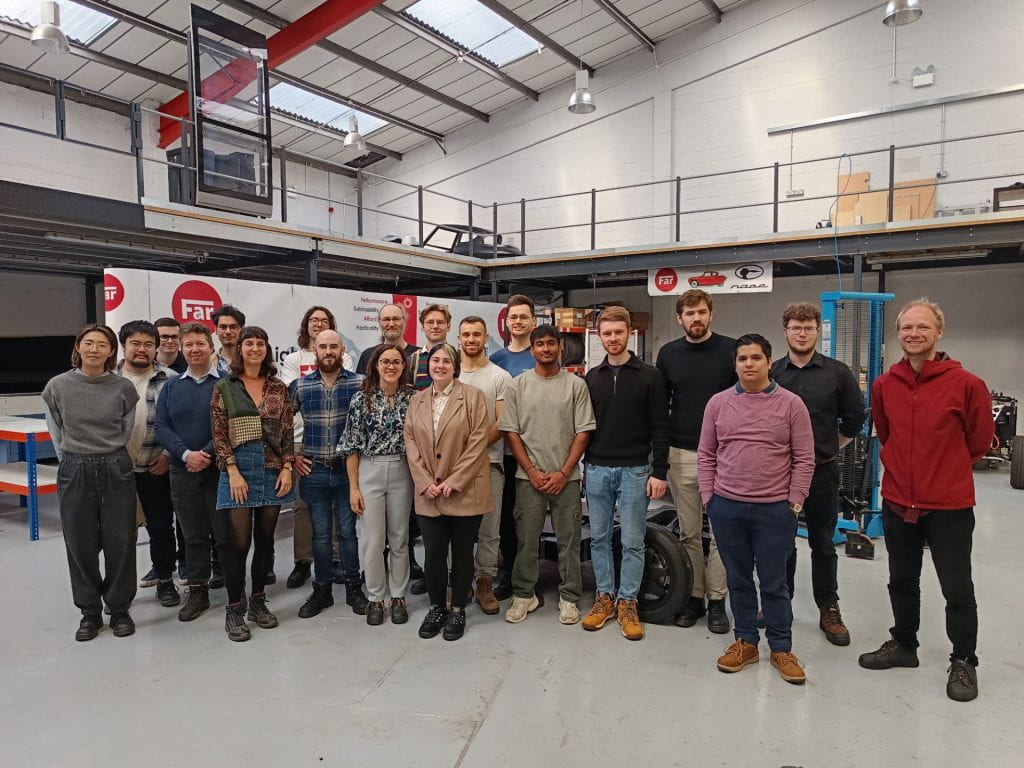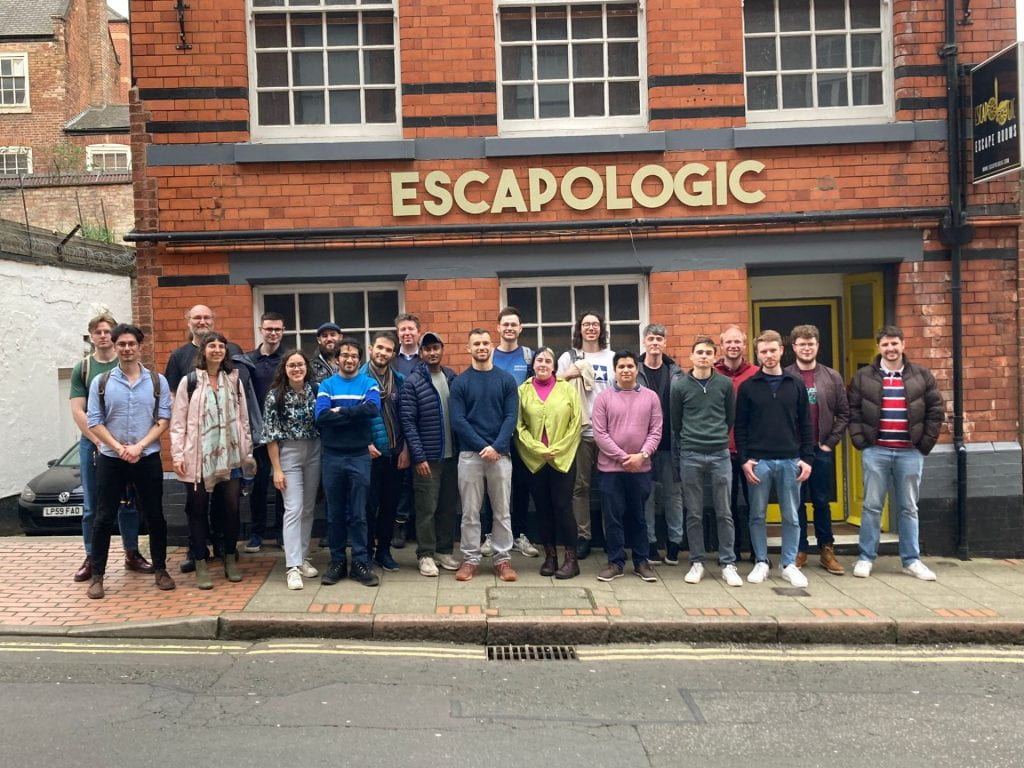 We are pleased to announce an impressive line up of academics, researchers and PhD students from the Bristol Composites Institute (BCI) who will be presenting their latest work at ECCM21 (the 21st European Conference on Composite Materials) in Nantes, France, from 2nd-5th July 2024.
We are pleased to announce an impressive line up of academics, researchers and PhD students from the Bristol Composites Institute (BCI) who will be presenting their latest work at ECCM21 (the 21st European Conference on Composite Materials) in Nantes, France, from 2nd-5th July 2024.
ECCM is Europe’s leading conference on composite materials and will provide a forum for access to the latest knowledge from both industry and academia in all areas of composite materials. The event is organised by the Institute of Civil Engineering and Mechanics (GeM) of the Nantes Université and Centrale Nantes, under the patronage of the European Society for Composite Materials (ESCM) and the French Association for Composite Materials (AMAC).
The NextCOMP team will be hosting sessions on “Understanding and improving longitudinal compressive strength”. These will be taking place in Auditorium 450 on Wednesday 3rd July, 14:30-16:00, and all day on Thursday 4th July, including a keynote from Prof. Michael Wisnom at 14:00 on the Thursday.
Wednesday 3 July BCI speaker line-up:
Room BC / 09:30 – speaker: Ole THOMSEN. Title: Co-Director Bristol Composites Institute. Talk title: Integrated testing and modelling of composite structures – a journey towards virtual testing and certification by analysis. Abstract.
Room BC / 10:15 – speaker: Meng Yi SONG. Title: Research Associate. Talk title: Application of second-order multi-scale modelling to composite components with delamination, fibre and matrix damage. Abstract.
Room I / 10:15 – speaker: Umeir KHAN. Title: Graduate Teacher, School of Civil, Aerospace and Design Engineering. Talk title: Quantifying preform quality through defect inspection of in-factory photographs. Abstract.
Room BC / 10:30 – speaker: James KRATZ. Title: Senior Lecturer, School of Civil, Aerospace and Design Engineering. Talk title: Characterization of micro-structural features in complex parts for use in digital technologies. Abstract.
Room 200 / 11:30 – speaker Hengli CAO. Title: Postgraduate. Talk title: Metal-epoxy-matrix carbon-fibre hybrids for functional and structural applications. Abstract.
Room I / 12:00 – speaker: Gabriel BURKE. Title: Faculty Intern, School of Civil, Aerospace and Design Engineering. Talk title: Artificial Intelligence for Process Monitoring of Automated Fibre Placement – Real-time Defect Detection and Classification. Abstract.
Auditorium 450 / 14:30 – speaker: Iheoma NWUZOR. Title: Research Associate. Talk title: Integrating Fiber Overbraids in Composites for Enhanced Compressive Performance. Abstract.
Room KL / 14:45 – speaker: James UZZELL. Title: Postgraduate, Advanced Composites. Talk title: New inductive coil designs for improved efficiency in composites processing. Abstract.
Room 150 / 14:45 – speaker: Dominic PALUBISKI. Title: Senior Research Associate. Talk title: Liquid Moulding Strategies for Challenging Functional Matrices: Repair and Energy Storage Applications. Abstract.
Auditorium 450 / 15:30 – speaker: Ian LEE. Title: Graduate Teacher, School of Civil, Aerospace and Design Engineering. Talk title: Cobotic manufacture of hierarchically architectured composite materials. Abstract.
Poster Presentations:
Mezzanine, 16:00 – 17:30
Maria VEYRAT CRUZ-GUZMAN. Title: Graduate Teacher, School of Chemistry. Poster title: Crystallisation Kinetics of PEEK Composites using Fractional Differential Equations.
Sutharsanan NAVARATNARAJAH. Title: Graduate Teacher, School of Civil, Aerospace and Design Engineering. Poster title: A Curved-Crease Origami Approach to Forming Composite Structures
Thursday 4 July BCI line-up:
Club Atlantique / 09:15 – speaker: Bing ZHANG. Title: Visiting Research Fellow, School of Civil, Aerospace and Design Engineering. Talk title: A numerical investigation into the electrical properties of through-thickness reinforced composites. Abstract.
Auditorium 450 / 09:45 – speaker: Joe RIFAI. Title: Postgraduate, Advanced Composites. Talk title: The effects of stacking sequence on the compressive performance of composites. Abstract.
Club Atlantique / 10:00 – speaker: Christian STEWART. Title: Graduate Teacher, School of Civil, Aerospace and Design Engineering. Talk title: Damage Tolerance of 3D Woven Composites. Abstract.
Auditorium 450 / 10:30 – speaker: Eleni GEORGIOU. Title: Postgraduate, Advanced Composites. Talk title: Enhancing the compressive performance of basalt/epoxy pultruded rods using polyhedral oligomeric silsesquioxane (poss) as nano- reinforcement. Abstract.
Room R02 / 11:15 – speaker: Ogun YAVUZ. Title: Senior Resident. Talk title: Isothermal forming simulation of HiPerDiF PLA/Carbon fibre layer under processing conditions. Abstract.
Auditorium 450 / 11:30 – speaker: Nicolas DARRAS. Title: Graduate Teacher, School of Civil, Aerospace and Design Engineering. Talk title: Investigation of the internal structure configuration of hierarchical composites and its impact on their mechanical compressive performances. Abstract.
Club Atlantique / 11:45 – speaker: Athira Anil KUMAR. Title: Graduate Teacher. Talk title: Implementation of Second-Order Homogenisation using Shell Elements for Woven Composites. Abstract.
Room 200 / 12:00 – speaker: Anatoly KOPTELOV. Title: Senior Research Associate. Talk title: A rapid Design for Manufacturing tool for injection over-moulded composite parts. Abstract.
Room KL / 12:15 – speaker: Prof. Janice DULIEU-BARTON. Title: Professor, School of Civil, Aerospace and Design Engineering. Talk title: Embedded flexible photonic sensors for cure monitoring and assessment of structural performance. Abstract.
Auditorium 450 / 14:00 – speaker: Prof. Michael WISNOM. Title: Professor of Aerospace Structures. Talk title: Compressive failure of carbon fibre composites due to instability at structural, material and constituent level. Abstract.
Auditorium 450 / 14:30 – speaker: Bohao ZHANG. Title: Research Associate. Talk title: The investigation of shear response of epoxy matrix under uniform compression. Abstract.
Auditorium 450 / 14:45 – speaker: Cameron WOODGATE. Title: Laboratory Assistant, School of Civil, Aerospace and Design Engineering. Talk title: Probing Compressive Behaviour and Failure in Single Carbon Fibre Composites: an In-depth Analysis using in-situ Laser Raman Spectroscopy. Abstract.
Room 200 / 14:45 – speaker: Jack DAVIES. Title: Postgraduate, Composites Manufacture. Talk title: A Numerical Tool for Smart In-situ Sensing of Defect Features in Large-scale Infusions. Abstract.
Room BC / 15:30 – speaker: Kyungil KONG. Title: Senior Research Associate. Talk title: Hydrodynamic Stable Suspension of Recycled Carbon Fibres through Eco-friendly and Cost-effective Surface Treatment. Abstract.
Room 200 / 15:30 – speaker: Hanna BEKETOVA. Title: Research Associate. Talk title: Prepreg consolidation predictions using deep learning. Abstract.
Auditorium 450 / 15:30 – speaker: Aree TONGLOET. Title: Graduate Teacher, School of Civil, Aerospace and Design Engineering. Talk title: Effect of hybridisation on the compressive behaviour of glass/carbon fibre hybrid composites comprising different types of carbon fibres. Abstract.
Auditorium 450 / 17:30 – speaker: Dr. Laura Rhian PICKARD. Title: Senior Research Associate. Talk title: Fuzzy overbraids for improved structural performance. Abstract.
















 We are pleased to announce an impressive line up of academics, researchers and PhD students from the
We are pleased to announce an impressive line up of academics, researchers and PhD students from the  A group of Sixth Form students are being taking part in the NextCOMP Crusher activity, guided by a current CDT student. Photo credit: James Griffith
A group of Sixth Form students are being taking part in the NextCOMP Crusher activity, guided by a current CDT student. Photo credit: James Griffith A group of Sixth Form students engaged in the activity of creating an aeroplane wing. Photo credit: James Griffith
A group of Sixth Form students engaged in the activity of creating an aeroplane wing. Photo credit: James Griffith A group of Sixth Form students testing their Marble Run. Photo credit: James Griffith
A group of Sixth Form students testing their Marble Run. Photo credit: James Griffith



